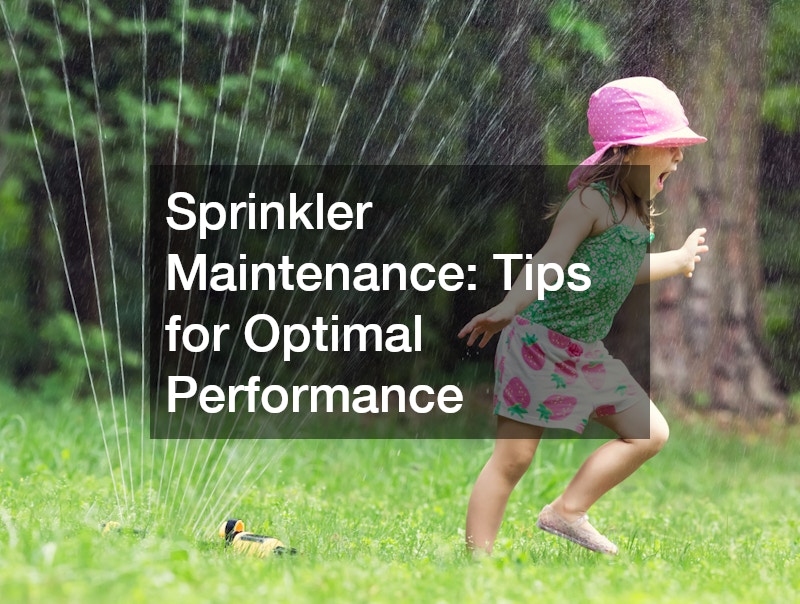
Maintaining a well-functioning sprinkler system is crucial for ensuring the health and beauty of your lawn and garden. Regular sprinkler maintenance not only enhances the system's performance but also extends its lifespan, ultimately saving you money and water. This article offers comprehensive tips for optimal sprinkler maintenance to help you achieve an efficient and effective watering system that keeps your outdoor spaces thriving.
Video Source
Sprinkler systems are designed to mimic natural rainfall and evenly water large areas. They come in various forms, including rotor, impact, and drip systems, each serving specific needs. Understanding your system's components, such as control panels, valves, and sprinkler heads, is essential for proper maintenance. Taking the time to familiarize yourself with how each part functions can prevent minor issues from escalating into costly repairs. Regularly reviewing the system manual or consulting with a professional can ensure you employ the correct maintenance practices.
The control panel is the brain of your sprinkler system and requires periodic checks to ensure it’s functioning correctly. Inspect the settings regularly to confirm that the schedule aligns with seasonal changes in weather. Additionally, check for any error messages or irregularities on the display and address them promptly. Inadequate battery power can disrupt the timing of irrigation cycles, so check and replace batteries as needed. Keeping the control panel in a sheltered location helps protect it from environmental damage, ensuring reliable performance.
Valves play a critical role in regulating water flow and are prone to wear over time. They should be inspected seasonally for leaks or damage. Debris and mineral buildup can obstruct valve function, causing pressure fluctuations. Cleaning valves and ensuring tight connections prevent unnecessary water waste and system inefficiencies. When repairs or replacements are necessary, promptly addressing these needs keeps the system running smoothly.
Conducting regular inspections is key to maintaining an efficient sprinkler system. Examine each sprinkler head to ensure they are not clogged and that it sprays evenly. A single obstructed head can lead to dry patches and uneven watering. Simple maintenance tasks, such as cleaning clogged nozzles and trimming grass around heads, can make a significant difference. Monitoring your system weekly during peak watering months can help catch issues early.
In addition to checking the heads, walk through the system while it's running to identify any problems with water pressure or distribution. Look for signs of leaks in pipes or connectors, which can often be repaired with simple tools and sealants. Catching leaks early prevents water waste and potential damage to your lawn or garden. Be mindful of any puddling or runoff, which may indicate that adjustments to the system's layout or watering time are needed. Regular assessment ensures that each zone receives the appropriate amount of water.
Beyond visual inspections, scheduling periodic deep cleaning of the system components is important. This includes removing debris and scale buildup from pipes and sprinklers. For regions with hard water, using a descaling solution can maintain optimal flow rates. Certain components, such as filters and backflow prevention devices, need more thorough cleaning to prevent contamination and maintain compliance with local regulations. Investing time in these maintenance routines enhances overall system efficiency and longevity.
Adjusting your sprinkler system according to seasonal weather patterns is essential for optimal performance. During colder months, it might be necessary to winterize the system to prevent freezing damage. Drain all water from pipes and use air pressure to clear the lines of residual moisture. As spring approaches, gradually reintroduce water to the system, checking for leaks or damage incurred during the winter months. Adjust watering schedules to align with the increasing temperatures and daylight as the growing season begins.
Summer demands a different approach, as increased evaporation may require more frequent watering. However, it's important to tailor watering schedules to local climate conditions, avoiding overwatering, which can lead to mold and disease in plants. Implement rain sensors or smart controllers to adjust watering schedules automatically based on weather predictions. Regularly calibrating these devices ensures they provide accurate readings and adjustments. By customizing the system's operation seasonally, you maintain an efficient and effective watering schedule throughout the year.
Fall is a time for preparation, as it marks the transition into colder months. Start by reducing watering frequency as plants enter dormancy and cooler temperatures reduce evaporation. Check system components for any wear or damage and perform necessary repairs. Consider aerating the lawn to ensure that water reaches deep into the root systems, preparing your turf for winter. Following these seasonal adjustments reinforces your system's health and readiness for the next watering season.
.